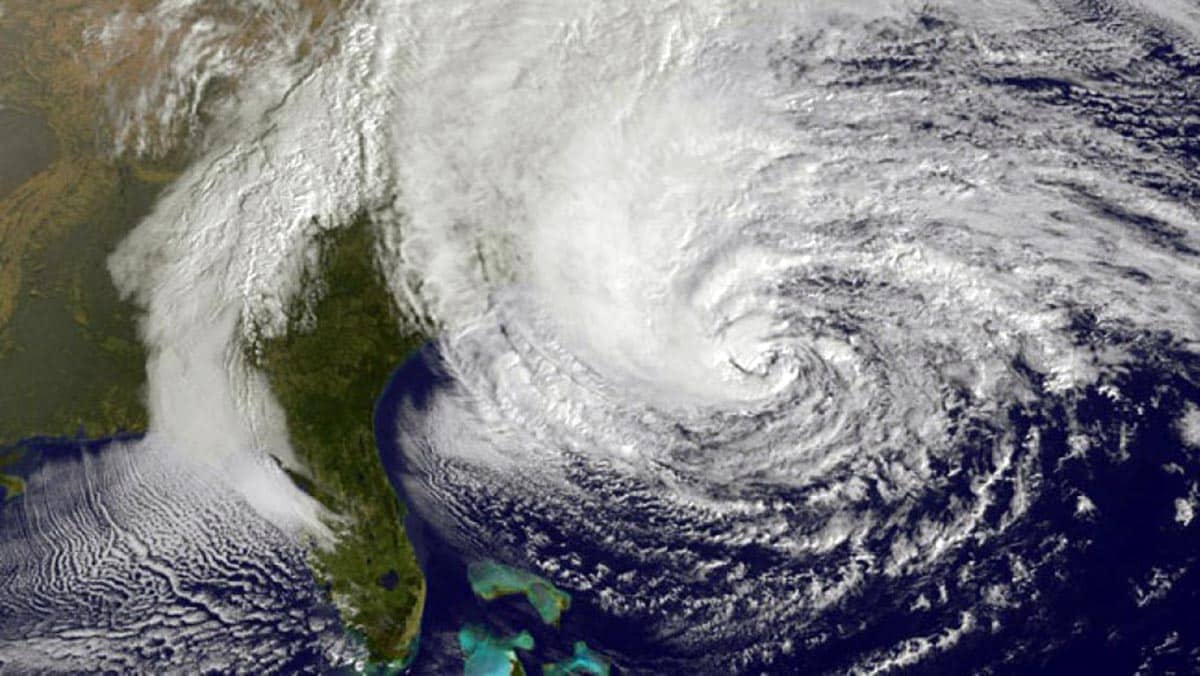In October of 2012, Hurricane Sandy ran a destructive path up the east coast of the U.S. Throughout the course of the hurricane, the storm created a heart-sinking mess of the IT infrastructure in low-lying portions of New Jersey and New York, particularly southern Manhattan.
Losing data during a natural disaster
For businesses and individuals who weren’t prepared for the massive data loss in the storm’s aftermath, the reality of the loss was devastating. Hurricane Sandy should be the go-to lesson learned for anyone who hasn’t realized that we’re all vulnerable to the forces of nature. Whether it’s a hurricane-force storm ripping into the server room that houses your data, a fire burning through your office, or rising waters from a flash flood destroying sensitive data storage devices, Sandy proved that no one is immune to a data recovery scenario.
The U.S. Small Business Administration reports that 25 percent of businesses never reopen after being hit by a disaster, but most, if not all of them probably could have avoided ruinous loss if they had planned ahead and spoken with a data recovery expert to devise a worst-case scenario backup plan.
A single back-up plan isn’t going to prevent the loss of your data in one, powerful weather event or disaster; you should have at least two back up strategies in place if you’re serious about protecting your business.
In June, Mayor Michael Bloomberg announced a $19.5 billion multi-decade plan to protect New York City against rising water levels and destructive storms. This was interpreted by many to be a glimpse of things to come; the time of denying the dangers of climate change is over.
Stop for a minute and consider the toll a storm like Sandy or a wildfire like those in Southern California that cause days or weeks of downtime and catastrophic data loss would have on your business. Could your current data backup plan salvage your operation?

A survey of small business owners found that on average, most believe it would take 16 days to recreate or recover lost files; almost a third said they would never be able to recover or recreate all of their critical business data if it was lost. Even those companies that can recover or replicate lost data stand to lose almost $3,000 each day that they are unable to operate; that means for the business that takes 16 days to restore data, the cost in downtime alone is close to $48,000.
Despite the lessons Sandy should have taught us, more than two-thirds of small businesses still have no disaster plan in place. They’ve fallen into a pattern of ignoring the reality of what a disaster would mean to their business because either it hasn’t happened yet, or they believe the odds of disaster striking twice are very low.
If you’re among the 62 percent of small business owners who believe that insurance would cover any damage caused by a natural disaster, here’s a rude awakening: traditional insurance does not cover data loss, which can run into tens of thousands of dollars. And despite the plights of the thousands of small businesses ruined in the aftermath of Hurricane Sandy, almost half of small business owners still don’t have an alternative disaster plan in place, for instance, one that provides for them to work from home if their workplace becomes a disaster zone.
And in case you don’t recall Hurricane Irene (2011,) New Yorkers barely dodged a bullet when she merely skimmed the city.
But the real red flag is that two “100-year storms” hit the same area in just two years calls into question the accuracy of assuming any weather event will wait 100 years to present itself again.
Less than 75 percent of small businesses back up their data electronically, while the majority (63 percent) use on-site backup methods like external hard drives, NAS devices and servers that don’t protect files against fire, flood and other disasters; only 39 percent say they use cloud storage backup to protect their business files offsite and out of harm’s way.
So, what have we learned from Hurricane Sandy? Plenty. Still, too many small businesses are guilty of inaction when it comes to protecting their important data.
Want to learn more about data recovery costs?
Understand exactly what you are paying for when it comes to professional data recovery services. Our data recovery cost guide can help you assess what expenses you should expect if your data was damaged in a natural disaster!
Need your data recovered after a natural disaster?
Let our data recovery experts help you if your data was damaged or destroyed!
Recover Your Data







